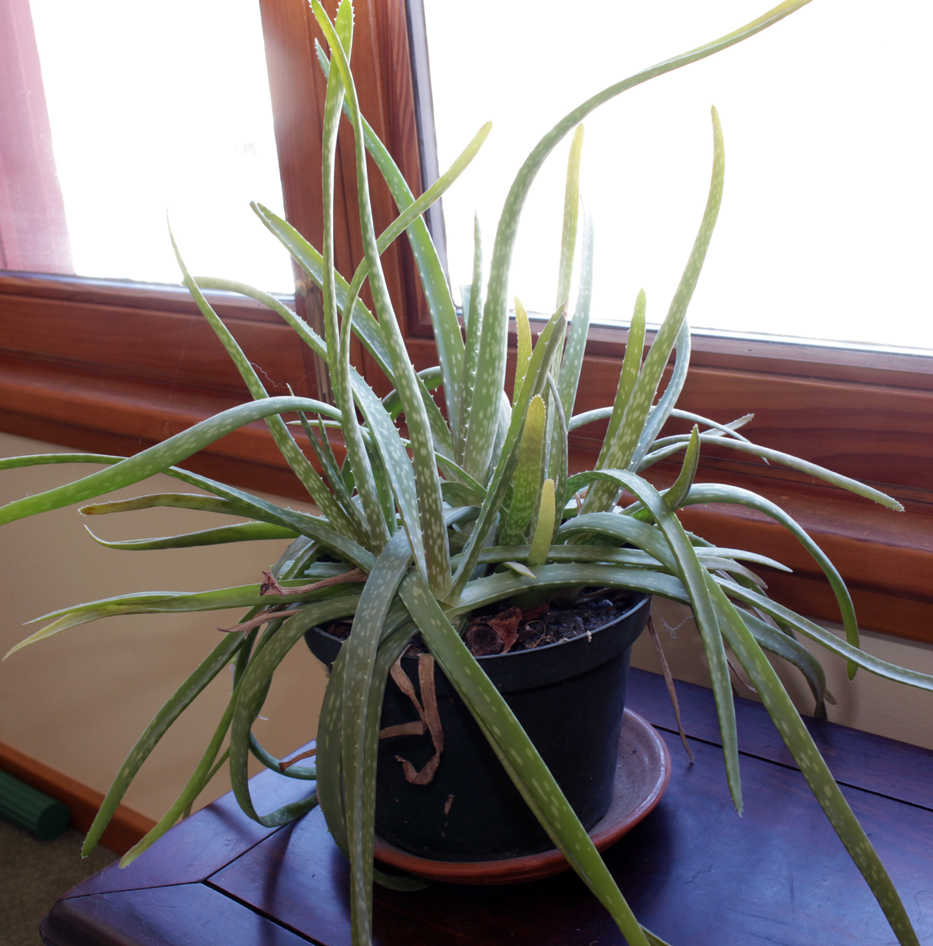A friend phoned me a few weeks ago concerned about the sunken, blackened areas on the trunk of her jade plant. When I suggested that she might be overwatering, she replied that she watered only once a week.
That made me sure she was overwatering.
Jade plants are succulents, a group of plants linked not by any botanical kinship but by a physical kinship: They all have fleshy leaves and stems swollen with water. Cactuses are succulents, as are hens-and-chicks, aloe and purslane. Those water-filled stems and leaves tide the plants through dry periods.
PHOTOSYNTHESIS WITHOUT WATER LOSS
All plants lose water through tiny pores in their leaves, pores that are also avenues through which oxygen enters and carbon dioxide exits for photosynthesis. Such a setup puts most plants in a bind during dry times. Should they open their pores so that photosynthesis can give them energy, but risk drying out? Or should they close up their pores to conserve water, but suffer lack of energy?
Besides being able to store water in their stems and leaves, jade plants and other succulents have a couple other tricks for solving this conundrum. First, they have a more efficient way than most plants of concentrating carbon dioxide in their cells. Second, they work the night shift, opening their pores only in darkness, when little water is lost.
They latch onto carbon dioxide at night by incorporating it into organic acids. Come daylight, the leaf pores close up, conserving water, and the acids made the night before release the carbon dioxide within the plant to be used, with light, to make energy. You can actually taste this trick this summer by nibbling a purslane leaf at night and then another one in the afternoon. The leaves taste tart at night.
All of this means that my friend should water her jade plant much, much less. If there is ever a doubt about whether or not to water a succulent, not watering is the correct choice. These plants simply do not die from drying out.
I have an aloe plant that I water maybe once or twice a year. It looks fine.
Darwin studied the effect of gravity on plants by watching the response of another succulent, known as mother-in-law’s-tongue, hung upside down for six months. He didn’t have to bother watering it.
Too-frequent watering, or a soil through which water does not drain readily, will rot any succulent.
SUCCULENTS CAN HEAL
Even succulents with rot on them can usually survive or be revived. With less watering and/or better drainage, my friend’s jade plant should overgrow its blackened areas with healthy tissue. And any part of these plants that touches the soil can eventually grow roots to make a healthy, new plant.
These abilities are most welcome in a jade plant, but are not always welcome in a succulent like purslane, usually considered a weed. During a wet summer, the roots might rot away but the tops will remain alive, lying on top of the ground, flowering and spreading seeds. Chop purslane with a hoe, and each piece can give rise to a whole new plant.
Then again, you can eat purslane, even tailoring its flavor according to whether you pick it during the day or at night. Purslane is often found in green salads at ritzy restaurants.

